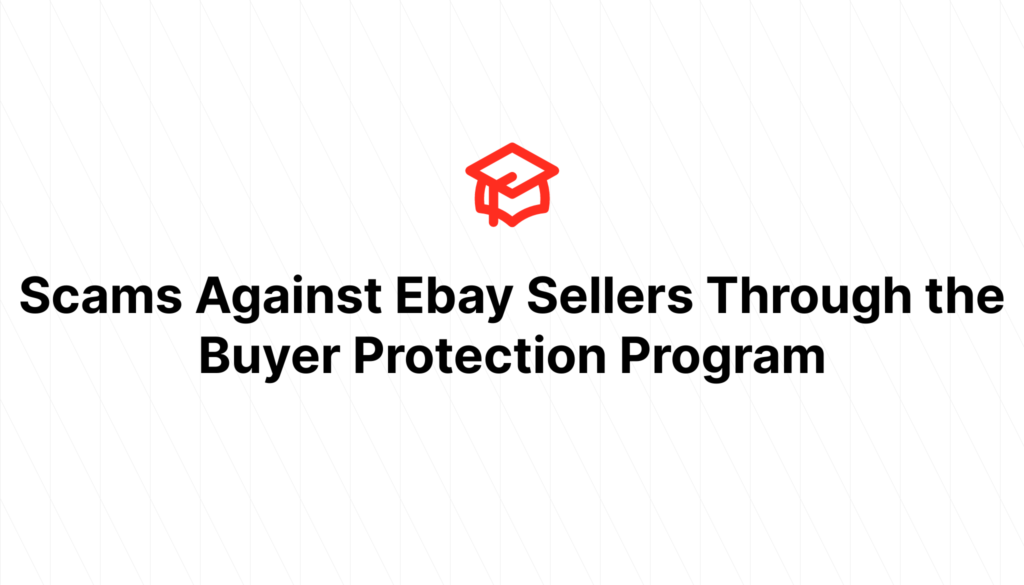For those who want to build a home business or simply make a little extra spending money, the allure of selling items on eBay can be strong. Individuals who wish to become eBay sellers should take the time to familiarize themselves with eBay’s general guidelines and the Buyer Protection Program. Knowing the finer points of how the Buyer Protection Program works can help honest sellers avoid eBay scams.

How Ebay’s Buyer Protection Program Works
When eBay went public in 1998, the website cautioned individuals to buy and sell items “at your own risk.” This policy essentially allowed dishonest sellers to list false items, obtain payment from an eager buyer and vanish–taking the buyer’s money with them. Ebay accepted no responsibility for ensuring a smooth transaction.
To keep unhappy buyers from giving up on eBay, the company later launched a “Buyer Protection Progam.” Through the Buyer Protection Program, buyers can report issues with a seller or an item. The dispute is then escalated to a dispute resolution department. If the dispute resolution team decides in favor of the buyer, eBay refunds the buyer the purchase price of the item, plus any shipping charges he paid, and withdraws that amount from the seller’s account.
An eBay buyer can raise a dispute about a transaction for the following reasons:
- The buyer received the wrong item
- The buyer paid for an item and never received it
- The item received does not match the auction description
- The item is defective
- The item is counterfeit
Buyer Scams Against Ebay Sellers
Because its difficult, sometimes impossible, for a seller to invalidate a buyer’s claim, sellers can now fall victim to eBay scams by buyers. Ebay’s Buyer Protection Program requires a buyer to return an item to the seller after it decides a case in his favor but issues a refund immediately. Should the seller then discover that the buyer sent him a box of rocks rather than the computer he originally mailed out, he has little recourse to recover the lost funds.
Ebay requires buyers to pay for the return shipping themselves but does not require them to purchase insurance on the item or provide proof of shipping. Thus, a seller may be required to issue a refund to a buyer for an item that never gets shipped back.
The feedback system, although intended to protect both buyers and sellers, prevents sellers from leaving negative feedback after a transaction. Ebay’s reason for this rule is a valid one. Sellers that intentionally market items inaccurately or attempt to defraud buyers cannot then leave retaliatory negative feedback for the buyer that reported them. The rule does, however, prevent sellers from using negative feedback to warn other sellers about buyers who make false claims.
Avoid Scams While Selling on Ebay
No surefire method exists for sellers to avoid eBay buying scams 100% of the time. There are actions an individual can take, however, to protect himself from becoming a victim.
- Checking the high bidder’s feedback. Although sellers can’t leave negative feedback for a buyer, some manage to warn future sellers by posting positive comments containing a warning message. Ebay allows sellers who have reservations about a transaction to refuse to sell an item to a bidder.
- Requiring shipping insurance. Sellers that require buyers to purchase shipping insurance have more protection against being swindled due to a “damaged” item that wasn’t damaged at all.
- Requiring delivery confirmation. A buyer cannot claim that he never received an item if the seller requires buyers to purchase delivery confirmation and can prove that the item was not only received but signed for.
- Actively participating in dispute resolution. A seller that fails to adequately defend himself and provide the necessary proof of his claim during the dispute resolution process will lose the case by default.
How to Handle Ebay Scams
Sellers who believe they’ve been the victim of an eBay buying scam should immediately contact eBay customer support either online through “My eBay” or by phone at 1-866-934-9647. Sellers must be prepared to provide proof of item delivery or legitimacy.
For sellers who are unable to resolve disputes through eBay customer support, alternate options exist. Individuals may hire a professional mediator through eBay for a fee of $15 or file a claim against eBay with the Better Business Bureau, the Federal Trade Commission or their state attorney general’s office.
Ebay auctions, like all business transactions, come with a risk. Although the Buyer Protection Program made progress toward preventing scams against buyers, it presented some new challenges for honest sellers.. Ebay sellers that make an effort to protect themselves from scams, however, can expect a greater number of smooth transactions and a more positive selling experience on eBay.
